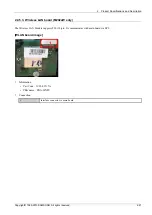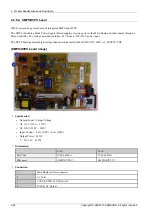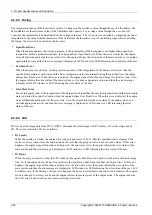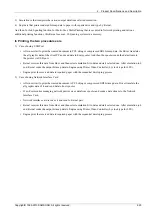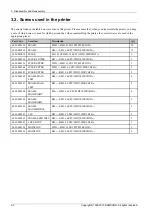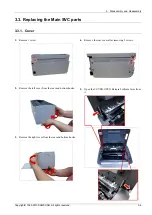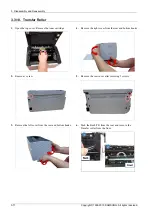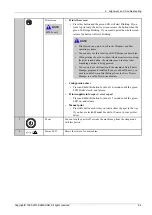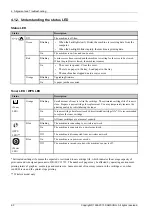
2. Product Specifications and Description
3) Emulation is that interprets the various output data from selected emulation.
4) Engine is that prints rendered bit-map data to paper with required size and type by Kernel.
And then, for Job Spooling function for Multi-User, Multi-Printing that is occurred in Network printing and various
additional printing functions, this Kernel use max. 10 Queuing systems in a memory.
In Printing, the two procedures are
1) Case of using USB Port
•
After user start to print the wanted document to PCL string or compressed GDI bit-map data, the Driver translates
the all graphic data of the client PC and send data to host spooler. And then the spooler sends the data stream to
the printer via USB port.
•
Kernel receives this data from Host, and then select emulation fit to data and start selected one. After emulation job
end, Kernel sends the output bit-map data to Engine using Printer Video Controller (by clock type for LSU).
•
Engine print the received data to required paper with the sequential developing process.
2) Case of using Network Interface Card
•
After user start to print the wanted document to PCL string or compressed GDI bit-map data, Driver translate the
all graphic data of it and send data to host spooler.
•
If so, Port monitor managing network port receives data from spooler and sends a data stream to the Network
Interface Card.
•
Network interface card receives it and send to Kernel part.
•
Kernel receives this data from Host, and then select emulation fit to data and start selected one. After emulation job
end, Kernel sends the output bit-map data to Engine using Printer Video Controller (by clock type for LSU).
•
Engine print the received data to required paper with the sequential developing process.
Copyright© 1995-2013 SAMSUNG. All rights reserved.
2-29







